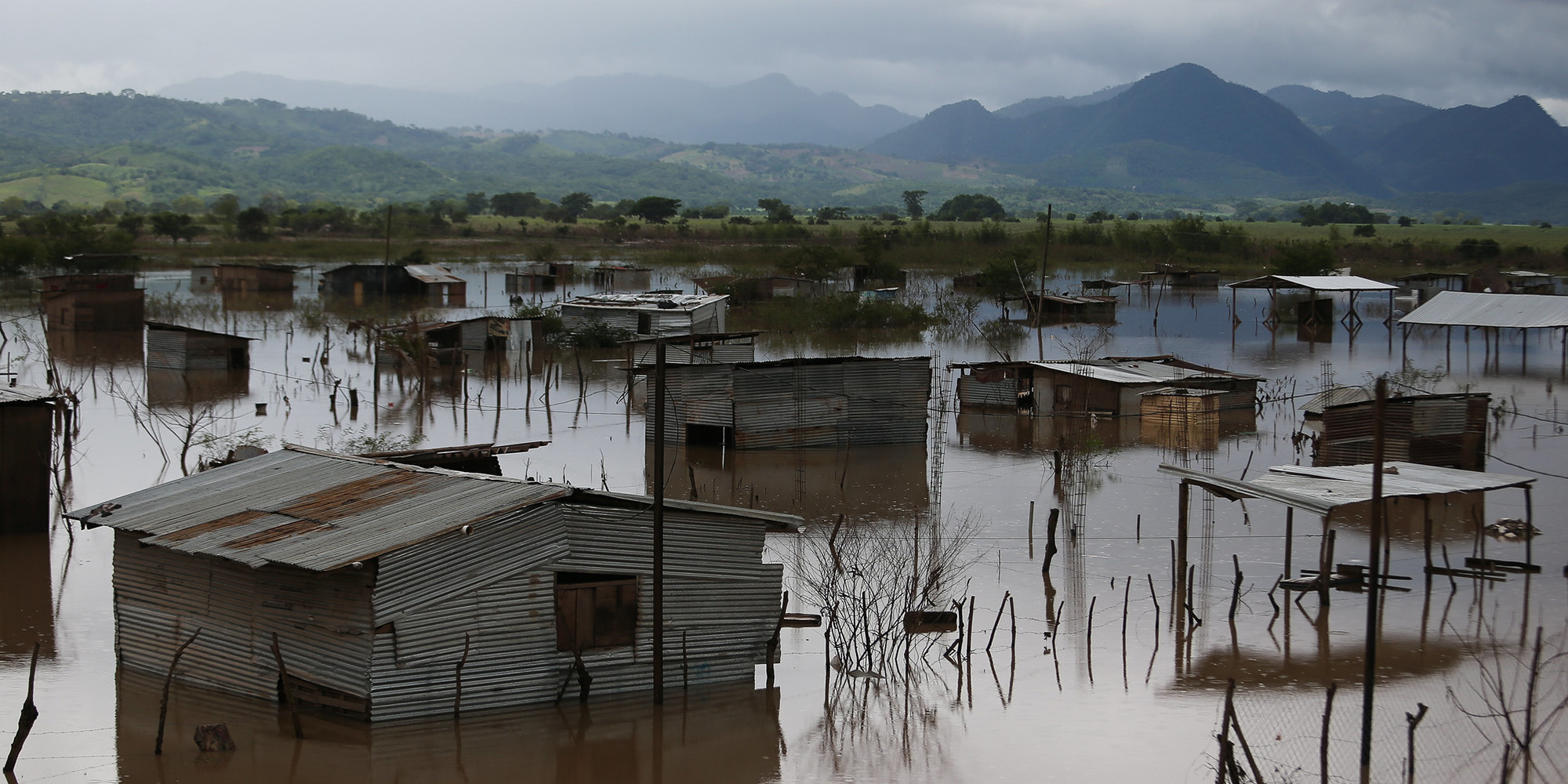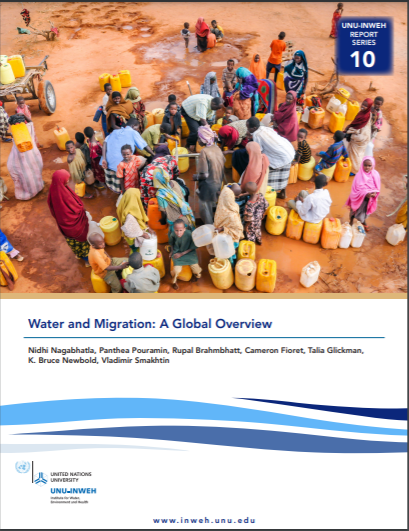
This article is part of the ISC’s Transform21 series, which features resources from our network of scientists and change-makers to help inform the urgent transformations needed to achieve climate and biodiversity goals.
There are currently around 79.5 million displaced people in the world. Many of them have been forced to flee due to conflict, persecution, insecurity, or a mixture of these challenges. The factors that force people to leave their homes behind are invariably complex, and the pressure to move may build up over a number of years rather than as a direct result of a one-off event.
Since 1990, when the IPCC warned that the ‘gravest effects of climate change may be those on human migration’, there has been increasing debate about the potential impacts of a changing climate on the number of displaced people worldwide, and what can be done to better anticipate future climate-related migration.
While attempts to retrospectively understand displacement may never identify a direct relationship between a single crisis and a decision to move, the use of remote sensing/GIS tools and observational data on climate change, combined with evidence from socio-economic research, is today helping to build the evidence base on so-called ‘environmental and climate migrants’.
“Many development reports quote a direct or indirect relationship between water prices, the climate crisis and the spillover impact on people. Migration is certainly one spillover impact that has not been explicitly discussed in the development discourse. It finds a brief mention in SDG 10, but that’s all” says Nidhi Nagabhatla, lead author of Migration and Water: A Global Overview, which was published in 2020. The Report zooms in on how water crises affect migration, and was highlighted in Future Earth’s 10 New Insights in Climate Change earlier this year.

Migration and Water: A Global Overview
Nagabhatla, N., Pouramin, P., Brahmbhatt, R., Fioret, C., Glickman, T., Newbold, K. B., Smakhtin, V., 2020. Water and
Migration: A Global Overview. UNU-INWEH Report Series, Issue 10. United Nations University Institute for Water, Environment and Health, Hamilton, Canada.
A starting point for this research is the growing evidence of how climate change is drastically exacerbating the water and food crisis, with far-reaching consequences. A massive 74 per cent of natural disasters between 2001 and 2018 were water-related, and climate change is expected to intensify extreme precipitation events, increasing the frequency and intensity of floods and droughts.
Aridification and other climatic hazards can also lead to water scarcity, whether because of a physical shortage of available water, or due to failures of governance and infrastructure that mean water doesn’t get to where it’s most needed. In addition, the latest research is demonstrating how climate change can have direct effects for water quality. When changing rainfall patterns coincide with changes to land use and demographics, they can also change the concentration of different pollutants, such as nitrate or phosphorus, in the world’s rivers, lakes and deltas.
The effects of water crises tend to reflect existing inequalities, with the most vulnerable groups most likely to suffer most as a result of extreme climatic events or poor water quality. Coastal flooding will disproportionality affect people living in river deltas, especially those living in high-density informal settlements and in small island nation states. Inadequate water, sanitation and hygiene resources disproportionately affect women and girls due to both biological and cultural factors.
When homes, livelihoods and personal safety are threatened by water crises, migration may appear to be the only solution.
“Although migrants rarely point explicitly to climate change as among the reasons for their move, they do cite the deterioration of traditional livelihoods.”
Neil Adger, Principle Investigator, MISTY: Misty: Migration, Transformation and Sustainability, part of the Transformations to Sustainability programme, speaking to the BBVA Foundation in 2021.
To build the evidence base on how water-related crises relate to migration, Nagabhatla’s team used some of the earliest satellite imagery from the 1970s to examine changes to water resources over time:
“We could see that the resource is shrinking. There is no iota of doubt on that. But in the past decades, the spillover impacts on the social capital have not been well documented. Sometimes the connection or interlinkage between water crisis and climate crisis is direct, such as floods, or extreme events like cyclones, hurricanes, or tsunamis. But for slow onset events, like droughts, or drying conditions, or water contamination, it remains difficult to capture how people decide to migrate due to these conditions”.
Nidhi Nagabhatla
By looking at known case studies, the team were able to uncover more about the short and long-term impacts of water crises that may lead to displacement and human mobility pathways.
“The Aral sea catastrophe, which was associated with water scarcity and aridification leading to persistent droughts and desertification, is well reported in the media and scientific documents. But there were only a handful of scientific reports or media reports or that covered the scale of impacts on the human community, such as the health impacts of people suffering from diseases linked to arid conditions that can influence their decision them to migrate,” says Nagabhatla.
The Report team compiled data on displacement and evidence on water crises in different places, such as Lake Chad, where water scarcity has resulted from hydroclimatic variations in rainfall patterns and drying related to drought, and from areas affected by hurricanes and cyclones, such as Bangladesh, the eastern coast of India, and Small Island Developing States.
“We were able to see the trends and patterns of how migration, climate and water parameters were interacting. We had a global overview of the incidence of floods and credible reports backing up the idea that this led to temporary or seasonal or permanent displacement” says Nidhi.
By correlating the major climate or water events with displacement statistics, the research team developed a framework for understanding the direct and indirect drivers of water-related migration and displacement.
In Central American countries such as Honduras, the team found that that many of the drivers influencing migration decisions were linked to how people were using natural resources as for income and livelihood generation. Drought conditions, or water contamination due to mining, as well as conflicts about water allocation for irrigation and crop production, and rights to natural resources, were all among the factors influencing migration.
“A mix of many things was driving people from their homelands,” says Nidhi, “we were trying to highlight the climate and water-related dimensions in the mix”.
Inspired by the scenarios produced by the Intergovernmental Panel on Climate Change (IPCC) or the Intergovernmental Science-Policy Platform on Biodiversity and Ecosystem Services (IPBES), and risk assessment reports produced by the World Economic Forum, Nidhi and her colleagues developed a ‘3-dimensional’ assessment framework that connects migration flows to different push factors such as water quality, quantity or availability, and water extremes.
“Under these scenarios are indicators through which we can measure – at least to a fair degree – how the different factors are interacting to directly or indirectly influence the decisions of people to migrate, either within their territorial boundaries or internationally,” says Nidhi.
The report suggests proxy measures that can be used by countries, communities and researchers to better understand, quantify and monitor climate- and water-related displacement. Based on this assessment framework, the report also identifies the areas of the world that are most vulnerable and which require particular attention from policy-makers. In some vulnerable zones, such as in the Congo Basin, a multitude of factors – geopolitical, social and cultural – interact with and exacerbate climatological or hydrological pressures.
One of the areas identified as being especially vulnerable to water-related displacement were the Small Island Developing States (SIDS), such as Tuvalu. Some of these states are already in discussions with countries in their neighbouring regions about what would happen to their populations if they were affected by water extremes or submerged in the coming years.
And if that sounds alarming, it should: in many instances, migration is the only choice – or rather, it’s not a choice – it’s the only option people are left with as an adaptation measure, says Nidhi.
This is why migration is increasingly being treated as an adaptation strategy within the international policy community. In light of the growing evidence on the consequences of water- and climate-crises for displacement and migration, it’s no longer sufficient for policy-makers to focus on response: they also need to prepare.
While there is significant concern about water- and climate-related migration, it should be reflected in the climate agenda and receive dedicated support, says Nidhi. The Global Compact on Migration, which was endorsed by the UN General Assembly in December 2018, is a step in the right direction but there is still more to do. Research findings on the causes, risks and impacts of displacement and migration should help to strengthen policy-making, and ultimately to ensure the rights and security of those most vulnerable to water- and climate-related displacement.

Nidhi Nagabhatla is a Research Fellow with United Nations University Institute on Comparative Regional Integration Studies (UNU-CRIS), Belgium. A sustainability science specialist and a systems analyst with >20 years of work experience, she led, coordinated, and implemented transdisciplinary projects in various geographical regions of Asia, South Africa Europe, and Americas working with international organizations viz., IWMI, World Fish Centre, IUCN, Asia Pacific Climate Center, and United Nations University (INWEH) leading research and capacity development initiatives.
Image: European Union, 2020/D. Membreño via Flickr.